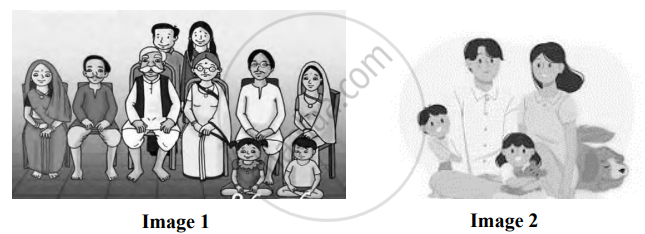Advertisements
Advertisements
Question
Answer briefly the following question :
What is an avuncupotestal family?
Solution
Avuncupotestal family refers to the one in which the authority is vested with the maternal uncle. The nephews and nieces show the greatest loyalty towards the maternal uncle and work for him and inherit his property.
APPEARS IN
RELATED QUESTIONS
Discuss the structural and functional changes of the Indian joint family system.
Answer briefly the following question :
Discuss the causes of the breaking of Joint families in India.
____________ is often grounded in stereotypes.
| The present study…deals with a Muslim biradri (community) called the Multani Lohars. ... Karkhanedar is a vernacular term used for a person engaged in the business of manufacturing of which he is generally the owner…The karkhanas under study operate in domestic conditions and, therefore, have certain pervasive effects on the life of the karkhanedars who work in them. …The following case illustrates this. Mahmood, aged forty years, was living with his two younger brothers, one of whom was married. He had three children and was the head of the complex household. …All the three brothers were employed in various karkhanas and factories as skilled workers. Mahmood successfully fabricated replica of a motor part the import of which had been banned. This greatly encouraged him to start his own karkhana…Later it was decided that two karkhanas should be set up to manufacture the motor part. One was to be owned by the two elder brothers, and the other by the youngest, provided he set up a separate household. Rasheed set up an independent household, consisting of his wife and unmarried children. Therefore, one complex household, comprising three married brothers, gave birth to a simple household as a result of new entrepreneurial opportunities. Excerpted from S.M. Akram Rizvi, ‘Kinship and Industry among the Muslim Karkhanedars in Delhi’, in Imtiaz Ahmad, ed. Family, Kinship and Marriage among Muslims in India, New Delhi, Manohar, 1976, pp. 27- 48. |
The given case states that the family type is:
| The present study…deals with a Muslim biradri (community) called the Multani Lohars. ... Karkhanedar is a vernacular term used for a person engaged in the business of manufacturing of which he is generally the owner…The karkhanas under study operate in domestic conditions and, therefore, have certain pervasive effects on the life of the karkhanedars who work in them. …The following case illustrates this. Mahmood, aged forty years, was living with his two younger brothers, one of whom was married. He had three children and was the head of the complex household. …All the three brothers were employed in various karkhanas and factories as skilled workers. Mahmood successfully fabricated replica of a motor part the import of which had been banned. This greatly encouraged him to start his own karkhana…Later it was decided that two karkhanas should be set up to manufacture the motor part. One was to be owned by the two elder brothers, and the other by the youngest, provided he set up a separate household. Rasheed set up an independent household, consisting of his wife and unmarried children. Therefore, one complex household, comprising three married brothers, gave birth to a simple household as a result of new entrepreneurial opportunities. Excerpted from S.M. Akram Rizvi, ‘Kinship and Industry among the Muslim Karkhanedars in Delhi’, in Imtiaz Ahmad, ed. Family, Kinship and Marriage among Muslims in India, New Delhi, Manohar, 1976, pp. 27- 48. |
As per the given passage, a complex household implies which of the following?
What is the difference between nuclear and extended family?
Herbert Spencer is the author of
Explain any four features of family as given by MacIver.

The two images shown above represent two family forms. Which one is characteristic of urban societies? Justify your answer with the help of six reasons.
Read the passage given below and answer the questions that follow.
|
I was born and raised in a large family in Ahmedabad where many members lived under the same roof. However, few months after I got married, my husband and I moved to Chennai. In the beginning, I enjoyed the privacy with my husband. But on certain occasions I also felt the absence of other family members around us along with their interactions and regular ‘interference’. As time passed by, I started feeling lonely and missed the crowd of relatives around me. I particularly remembered the fun-filled moments that I spent with my large family during festivals. My husband and I made good friends with few neighbours, but the loneliness remained. After the birth of both my children, I needed my mother and mother-in-law around to assist me for a while, but I had to manage on my own. Things became really difficult when I took up a job. I had to leave both my children in a day care centre. It was then that I most cherished the memories of my childhood spent with my family. |
- What types of family have been referred to by the narrator? (2)
- Compare the two types of families identified in subpart (i). (5)
